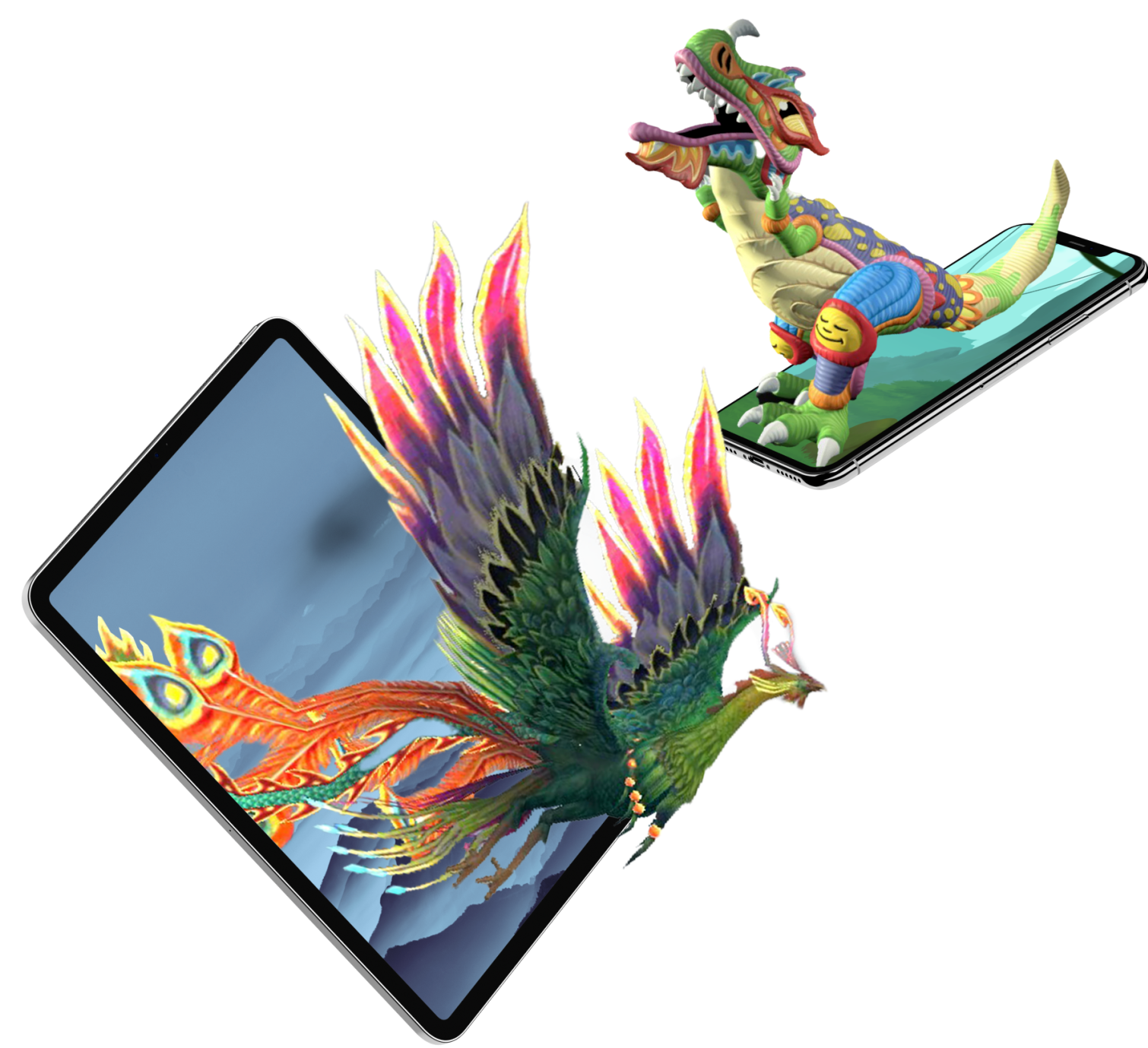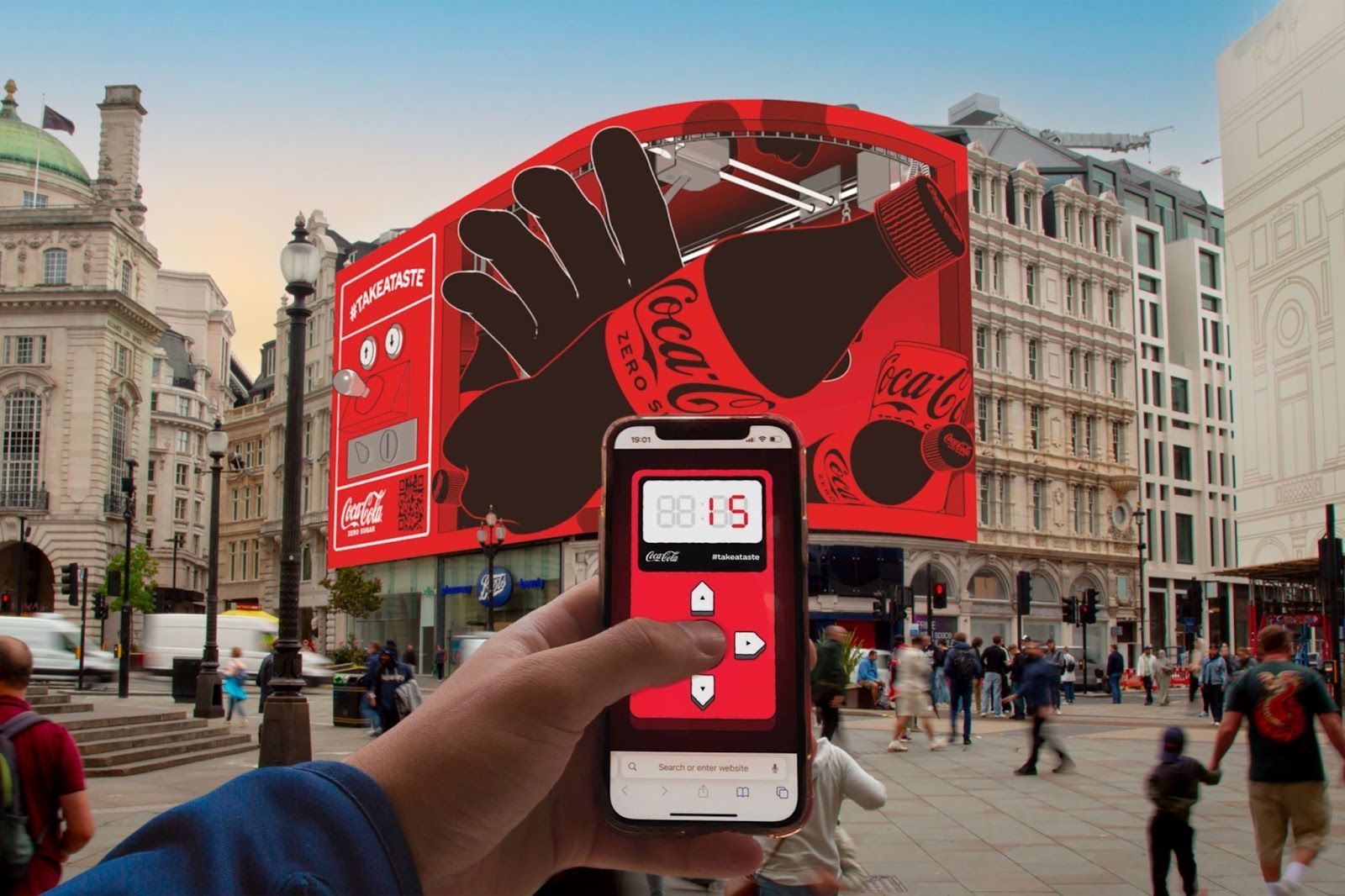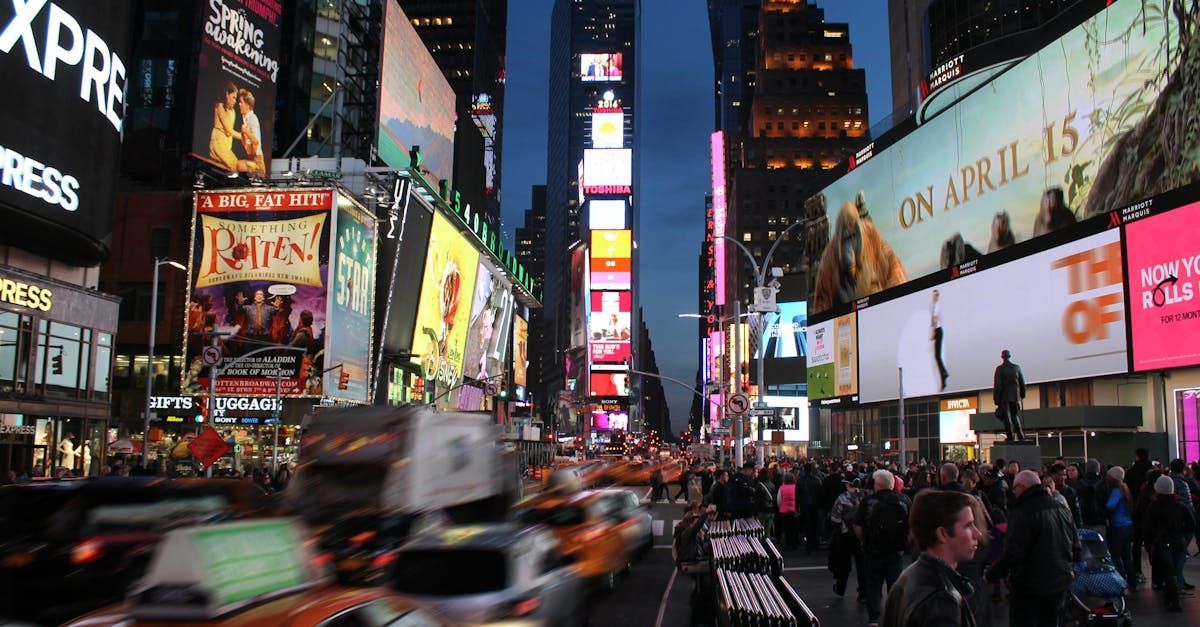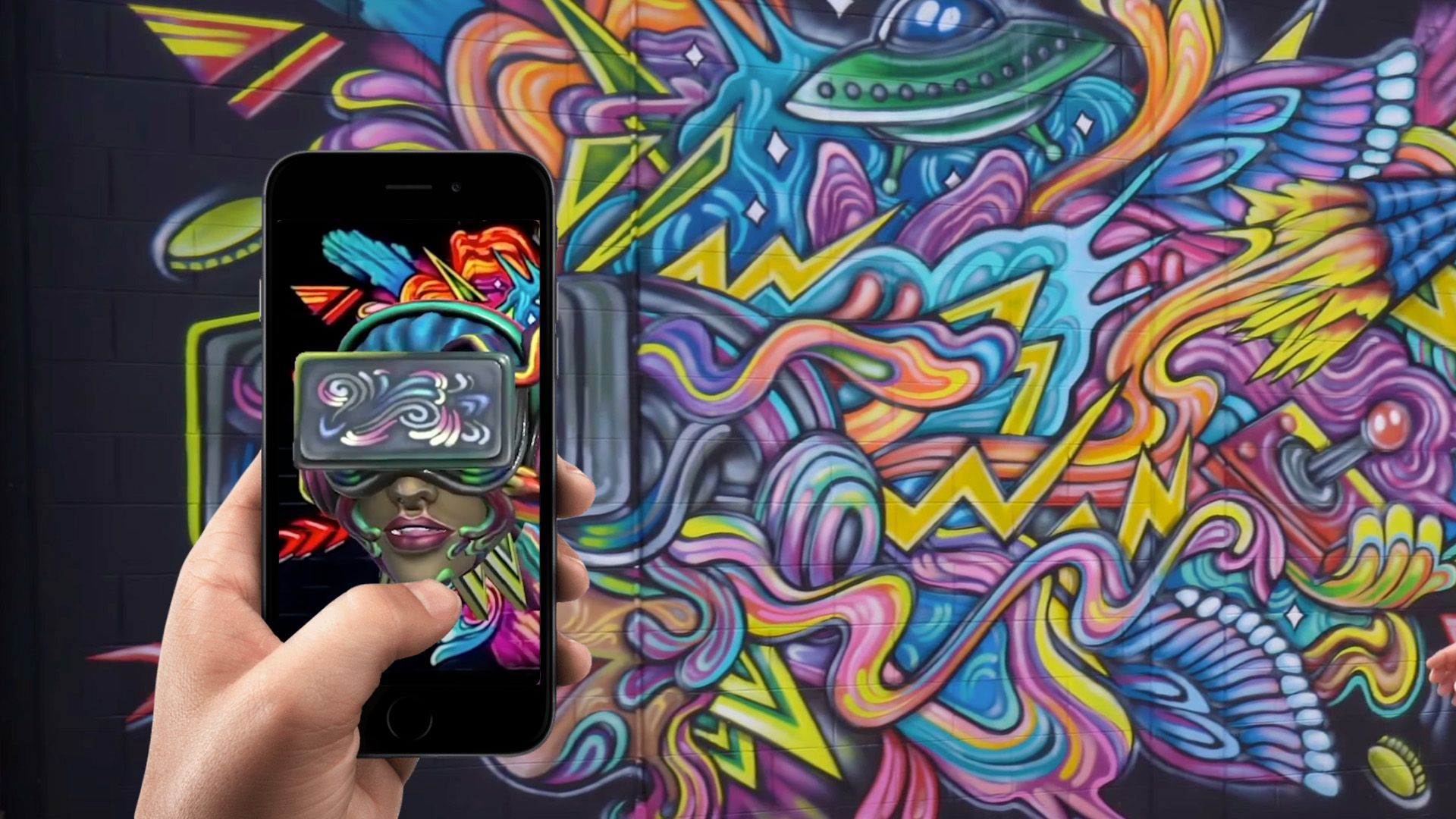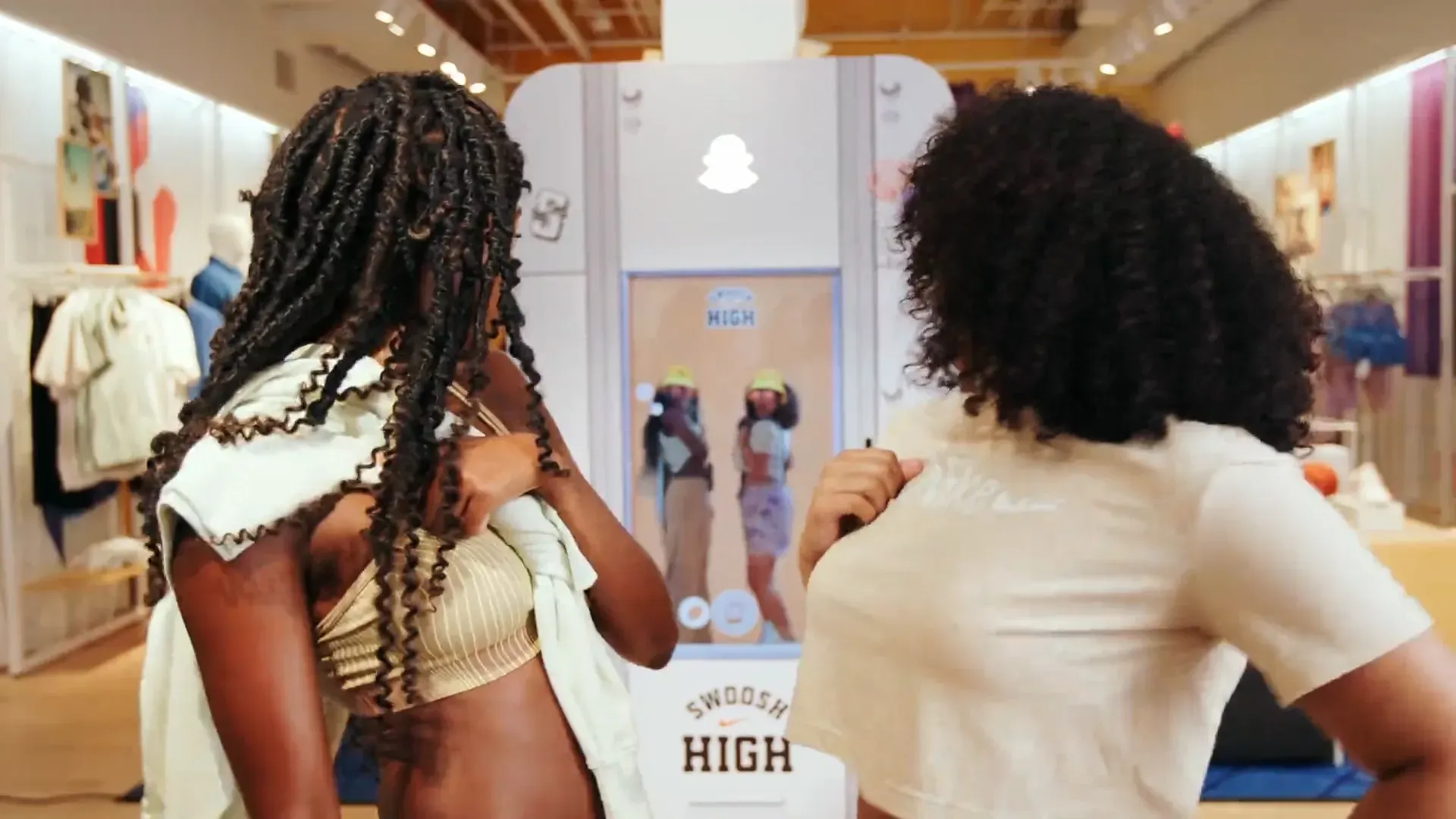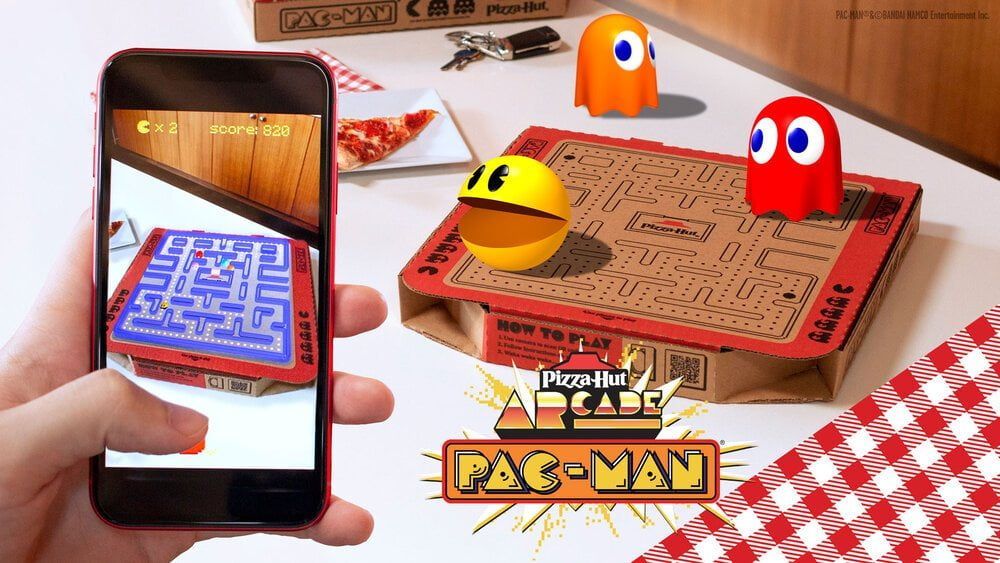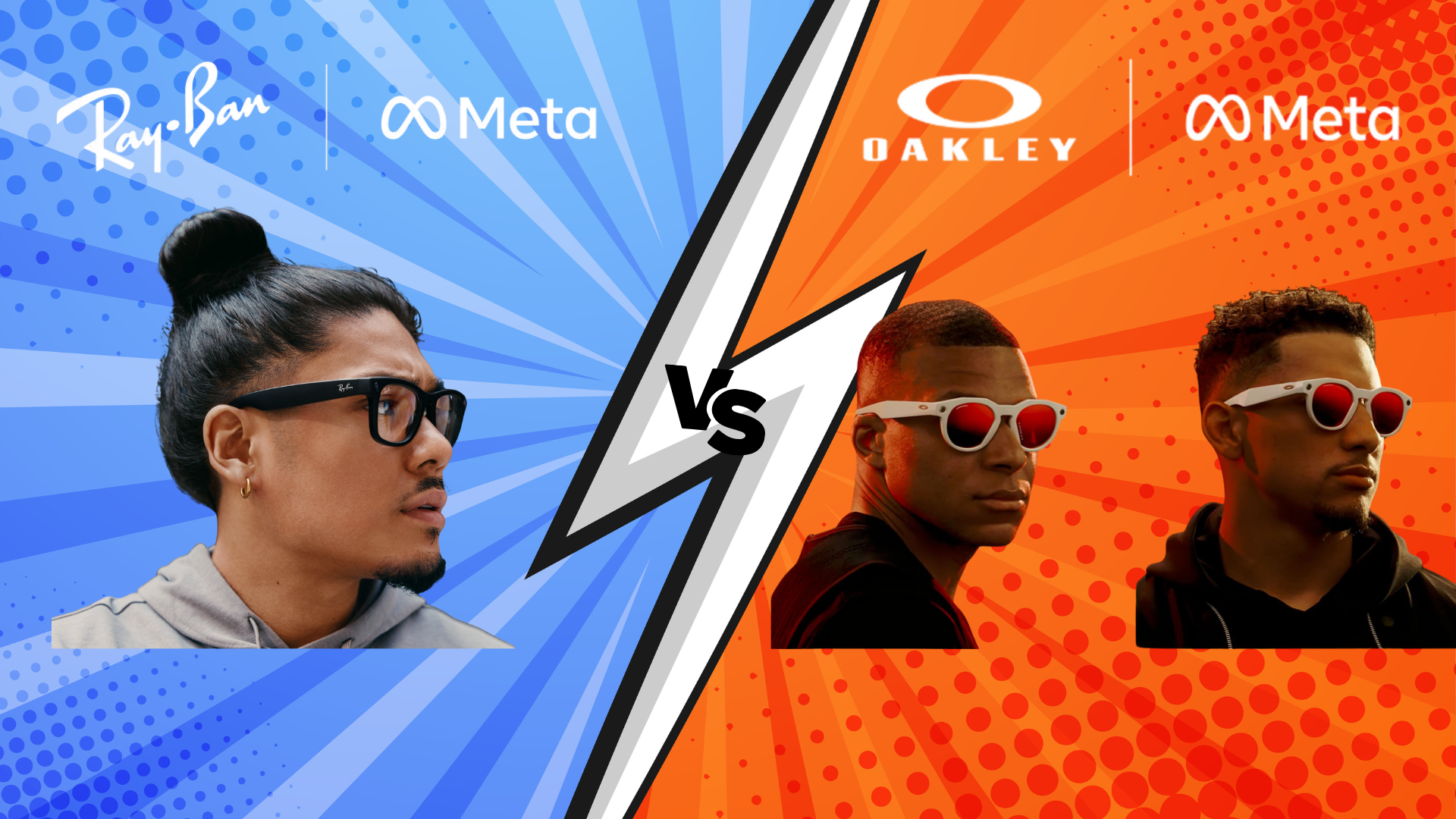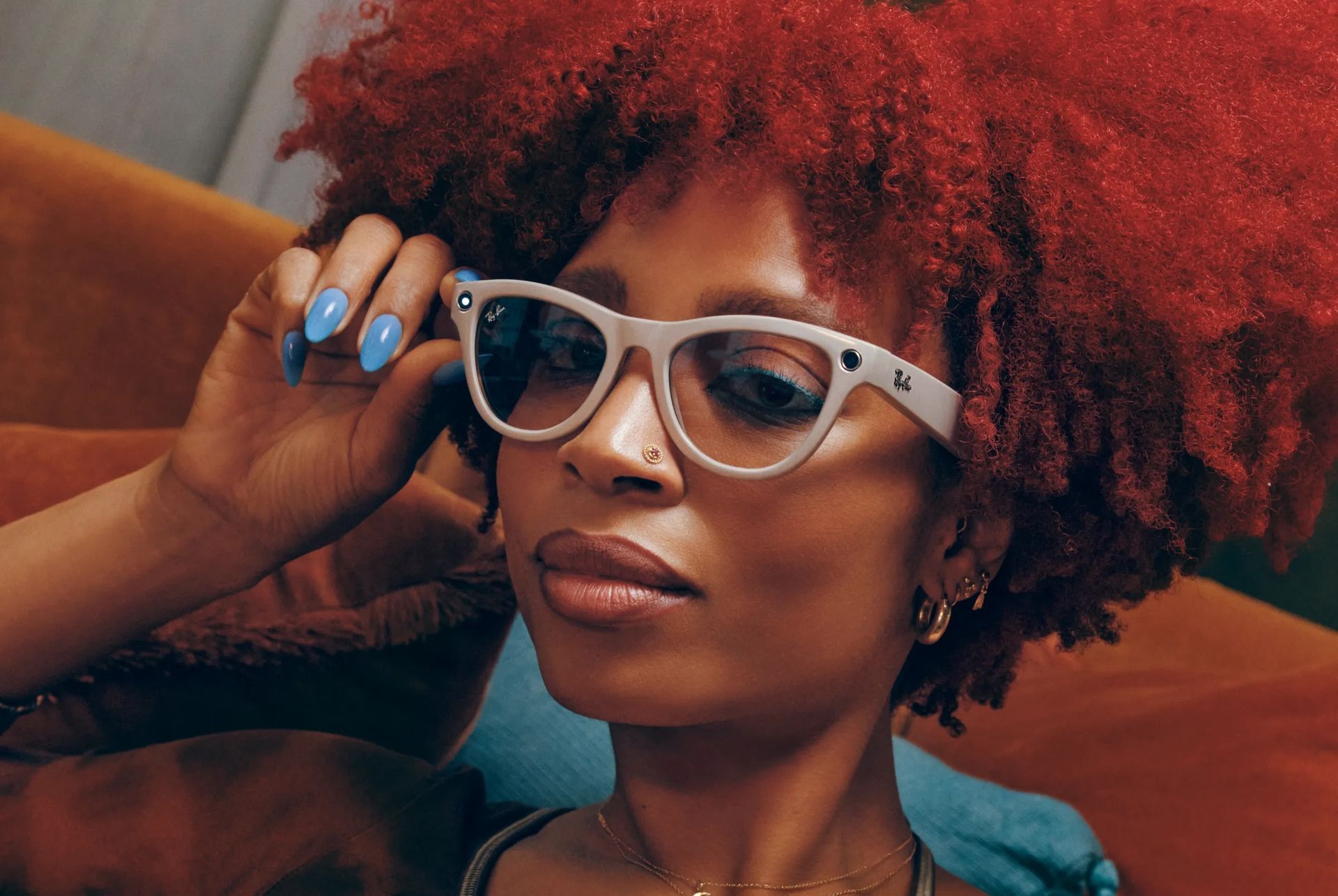AI-Powered Personalization: Personalized Customer Experiences at Scale
Executive Summary
Opportunity: Consumers now demand personalized experiences – 71% expect companies to deliver individualized interactions, and 76% are frustrated when this doesn’t happen. In response, marketers are rapidly adopting AI: 59% of marketing leaders already use AI to enhance personalization efforts. AI-driven personalization is a strategic game-changer, enabling brands to tailor content and offers in real time at scale, far beyond what manual methods allowed.
Proven Impact: Data shows that AI personalization can boost ROI and revenue significantly. Marketers report a 25% lift in ROI from AI-powered personalization, and companies using AI-driven personalization have seen sales increase by ~20%. Personalized content drives deeper engagement—organizations using AI personalization report 2× higher customer engagement rates and up to 1.7× higher conversion rates on campaigns. Fast-growing companies derive 40% more of their revenue from personalization than slower-growing peers, underlining personalization as a key driver of competitive advantage.
Case for OOH & Experiential: AI-powered hyper-personalization can transform high-impact OOH and AR-driven experiences. Dynamic digital displays utilize real-time data (e.g., weather, audience demographics) to tailor content on the fly, enhancing relevance and engagement. In experiential marketing, AI can provide individualized augmented reality interactions and context-aware content, making brand experiences more immersive and memorable. For BrandXR’s clients, this means AI can help deliver the “right message at the right time” on every screen and surface—turning mass advertising channels into personalized customer touchpoints without sacrificing scale.
Strategic Recommendation: Embrace AI personalization as a core strategy. This report details industry metrics, thought-leader insights, Fortune 500 case studies, and implementation guidelines to help BrandXR and its clients harness AI for hyper-personalized marketing. The goal is to drive higher ROI, customer engagement, and brand loyalty through tailored experiences in OOH and beyond. Executing on AI-powered personalization will reinforce BrandXR’s innovative edge in experiential advertising and deliver measurable business impact for the Fortune 1000 brands it serves.
The Rise of Hyper-Personalized Experiences
Customers Demand Personalization: Today’s consumers expect tailored experiences across channels—a trend intensified by digital-native leaders. Studies show that 80% of consumers are more likely to purchase from brands offering personalized experiences, and more than 70% expect personalization as a standard service. Failing to personalize is risky; 42% of consumers feel frustrated when content isn’t relevant to them. Personalization has become essential for capturing and retaining customer attention in a low-loyalty environment where alternatives are just a click away. As McKinsey observes, “Consumers don’t just want personalization, they demand it.” Getting personalization right boosts customer satisfaction and loyalty, while getting it wrong (or not doing it at all) poses a growing business risk.
AI as an Enabler: Delivering true one-to-one personalization at scale was historically challenging – marketers had to manually segment audiences and create content variants, which did not scale. Artificial Intelligence has changed the game, enabling hyper-personalization in real time. Advanced machine learning algorithms can analyze vast datasets (browsing behavior, purchase history, location, context) and instantly decide each customer's best content or offer. AI-driven decision engines and generative AI now allow marketers to craft “micro-segmented” messages and even auto-generate bespoke copy, imagery, or product recommendations on the fly. This means brands can communicate with millions of customers as if tailoring to each one individually, across digital channels and even in traditionally broad-reach media like out-of-home. As Salesforce CEO Marc Benioff puts it, “The ability to segment customers and deliver personalized experiences is a game-changer for marketers.” AI provides the speed and intelligence to make this game-changer a reality.
Market adoption is accelerating: Recognizing this value, companies are investing heavily in AI personalization capabilities. Surveys conducted in 2024 found that
59% of marketers, particularly in enterprises, are now using AI to enhance personalization initiatives. Marketing teams are applying AI across various areas, including
content optimization, customer journey mapping, chatbots, and predictive analytics, all to deliver more relevant experiences. Notably,
57% of large enterprise
marketing teams report that they are willing to increase their use of AI, indicating that AI-driven personalization is transitioning from experimental to mainstream. Industry leaders overwhelmingly believe that AI will redefine marketing; for instance,
80% of marketers
believe AI will revolutionize marketing by 2025. This consensus reflects a strategic reality: companies that leverage AI for personalization stand to gain a significant advantage in customer engagement and growth, while those that fall behind risk not meeting consumer expectations.
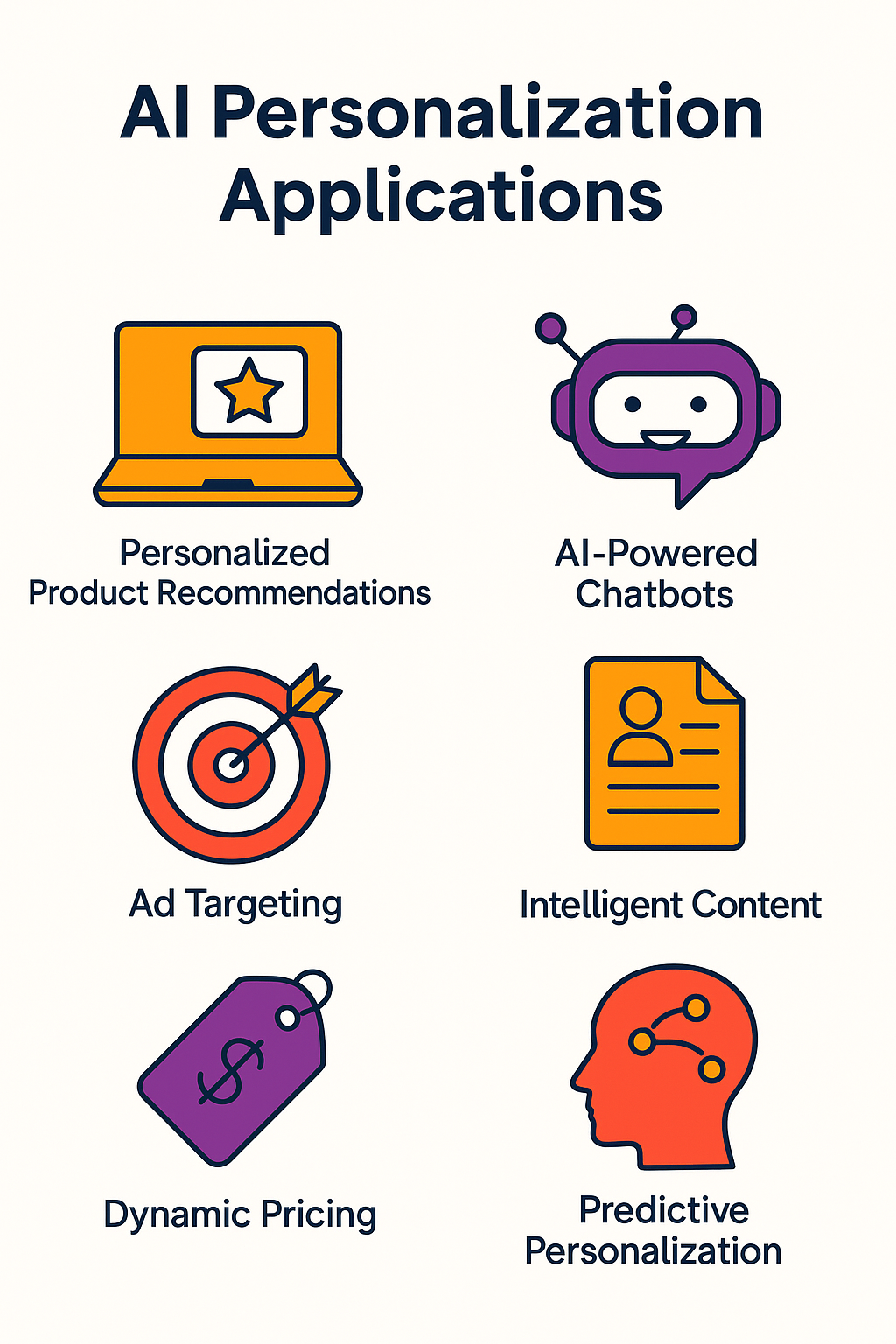
AI Personalization Applications
- Personalized product recommendations: AI analyzes browsing and purchase history to highlight products most relevant to each customer, enhancing average order value and conversion rates.
- AI-powered chatbots: Intelligent virtual assistants utilize NLP and user data to provide context-aware support, shortening response times and boosting customer satisfaction.
- Intelligent content: Generative algorithms customize copy, imagery, and video snippets in real time, ensuring each visitor sees messages that align with their interests.
- Ad targeting: Machine-learning models segment audiences at a micro level, dynamically delivering the highest-performing creative to each user across channels.
- Dynamic pricing: AI modifies prices in response to demand signals, inventory levels, competitor actions, and customer willingness to pay, maximizing revenue and margins.
- Predictive personalization: By analyzing behavioral and contextual data, AI predicts user needs—recommending the next-best offer, content, or action before the user explicitly requests it.
Data-Driven Impact: Key Metrics and Benefits
AI-powered personalization isn’t just hype – it’s delivering measurable improvements across marketing performance indicators. Recent industry data and surveys reveal:
- Higher ROI: Marketers utilizing AI personalization report an average
25% increase in marketing
ROI. In one global survey, 72% of advertising executives observed improved campaign ROI after implementing personalization at scale. McKinsey states that personalization leaders can
enhance
marketing spend efficiency by 10–30% by focusing on the most relevant content and offers for each consumer.
- Revenue Uplift: Personalization drives sales. The Boston Consulting Group found that companies using AI-driven personalization achieved an average sales increase of approximately 20%. Fast-growing firms attribute a significant portion of their revenue to personalized campaigns; in fact, companies that excel at personalization generate
40% more revenue from these
efforts compared to their peers. Personalized recommendations also directly enhance e-commerce income (e.g., an estimated
35% of Amazon’s
revenue comes from its AI-based product recommendations).
- Stronger Engagement: Tailored experiences deepen customer engagement and increase the time spent with the brand. Marketers utilizing AI for personalization have experienced
2× higher customer engagement
rates. For example, content hyper-personalization can significantly boost content views and click-through rates – one study noted personalized emails deliver
6× higher transaction rates than non-personalized ones. AI-curated content keeps users more engaged, resulting in longer interactions and more frequent visits.
- Conversion and Retention: Personalization enhances both conversion and loyalty. Businesses leveraging AI personalization have achieved
1.7× higher
conversion rates in marketing campaigns by ensuring offers genuinely resonate with individual needs. Additionally, AI-driven personalization also decreases churn – Gartner research links it to a
28% reduction in customer
churn rates as customers feel more understood and more attached to the brand. Netflix’s recommendation engine is a prime example: it’s estimated to save Netflix about
$1 billion
annually by reducing subscriber cancellations through improved content personalization. By maintaining relevant experiences, AI personalization increases lifetime value.
- Customer Satisfaction & Loyalty: When done correctly, personalization makes customers feel valued, boosting satisfaction scores by as much as
30%. A McKinsey study found that 78% of consumers are more likely to repurchase if they receive personalized content, and those excelling in loyalty typically shine at personalization. By tailoring messages, brands convey,
“we know and value you,” which fosters trust and loyalty. One result is
higher
engagement in loyalty programs and increased repeat purchase rates, as demonstrated by Starbucks’ AI-personalized rewards (discussed later).
- Cost Efficiency: By focusing marketing spend on key areas, personalization can reduce customer acquisition costs by as much as 50%. Fewer resources are wasted on broad, irrelevant ads. Automation through AI also lowers manual campaign management costs—companies using AI in marketing reported an average 37% decrease in marketing costs, according to some reports. In summary, personalization makes marketing not only more effective but also more efficient.
Table: Impact of AI-Powered Personalization
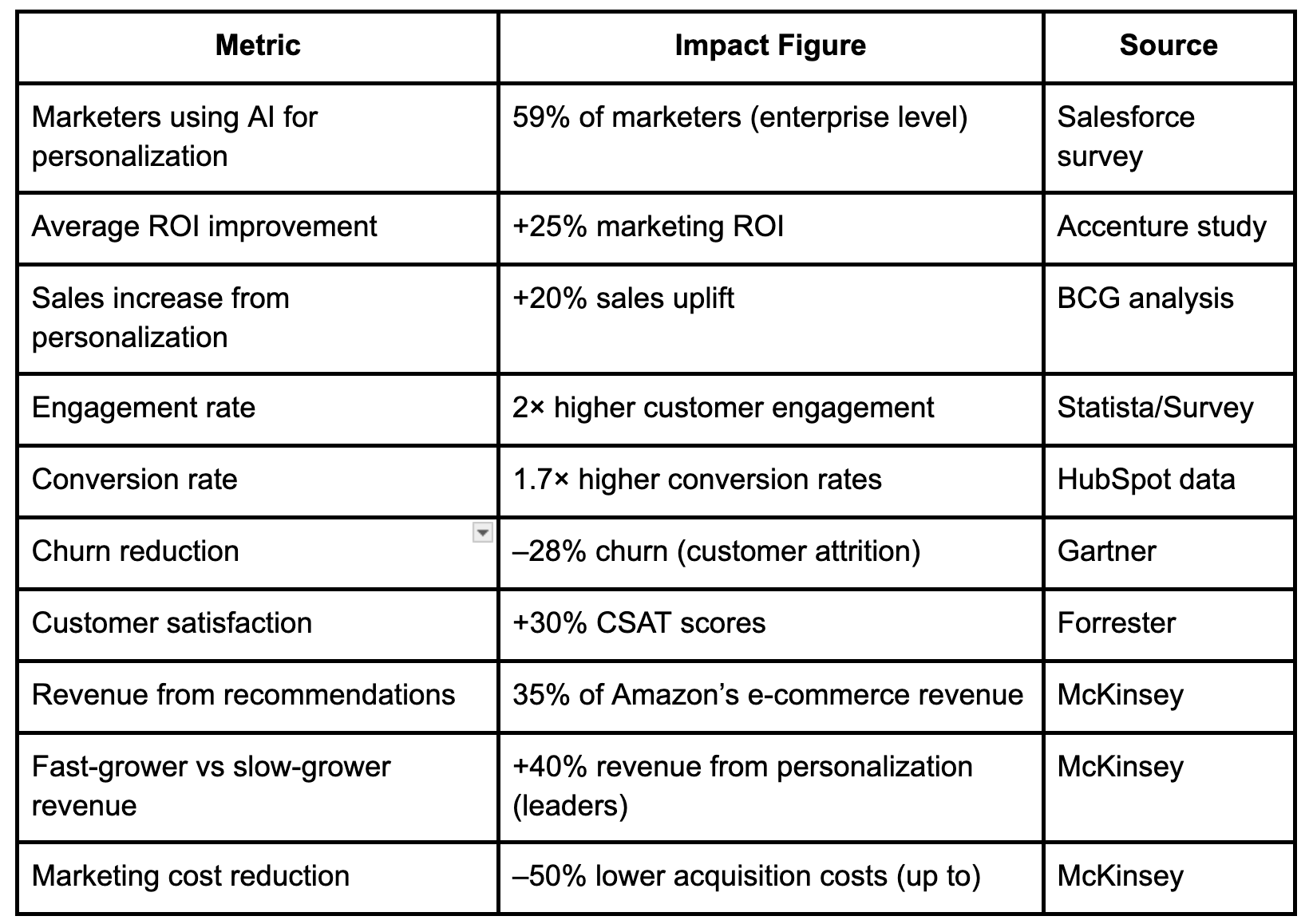
These data points highlight why personalization is regarded as marketing’s holy grail—it not only drives top-line growth but also enhances marketing efficiency and customer lifetime value. The evidence clearly shows that AI-driven personalization delivers substantial ROI and should be a strategic priority for brands seeking to strengthen customer relationships.
BCG’s Five Promises of Personalization
Boston Consulting Group’s book Personalized: Customer Strategy in the Age of AI distills world-class personalization into five customer-centric promises that brands must uphold to earn deeper loyalty and significant growth.
- Empower Me - Put the customer in control and make it effortless for them to achieve their goals (e.g., friction-free checkout, intuitive self-service tools).
- Know Me - Earn trust and permission to use data to recognize customers and anticipate their needs—always in a respectful, non-intrusive manner.
- Reach Me - Engage in the channels and moments the customer prefers, orchestrating messages seamlessly across web, app, email, social, and emerging touchpoints like DOOH and AR.
- Show Me - Present products, content, and offers that fit perfectly—curated, context-aware experiences that feel uniquely “for me.”
- Delight Me - Surprise and reward with unexpected value (exclusive perks, personalized rewards, immersive moments) that transform transactions into emotional connections.
BCG finds that companies delivering on
all five promises enjoy
2–3× higher revenue uplift from personalization compared to peers that only partially deliver.
Insights from Industry Leaders
Leading voices in tech and marketing consistently emphasize the power of personalization (enabled by AI) in modern strategy. A few perspectives illustrate the consensus:
- Jeff Bezos (Amazon founder) – highlighted the future-shaping role of AI in creating unique experiences: “Content personalization is the
future of marketing. AI allows us to create unique experiences for every customer.” This aligns with Amazon’s success in using AI recommendations to drive sales.
- Marc Benioff (Salesforce CEO) – stresses the transformational impact for marketers: “The ability to segment customers and deliver personalized experiences is a
game-changer for marketers.” Modern CRM and marketing cloud platforms (like Salesforce) are being infused with AI to make such one-to-one segmentation feasible in real time.
- Sheryl Sandberg (former Facebook COO) – on predictive personalization: “Predictive analytics empowers marketers to stay ahead of customer needs and deliver personalized experiences that drive loyalty.” Anticipating what customers want next (using AI) allows brands to delight customers and strengthen loyalty, as Facebook’s ad platform has demonstrated.
- Mark Zuckerberg (Meta/Facebook CEO) – on integrating AI in marketing: “Integrating AI into your marketing efforts is essential for delivering personalized experiences that drive results.” This underlines that AI is no longer optional but necessary for any marketer aiming to meet modern consumer expectations and achieve strong ROI.
- Clive Humby (Data Scientist, originator of “data is the new oil”) – “Data is the new oil. Without it, you can’t run AI-powered personalized marketing.” This reminds us that successful personalization hinges on rich data and analytics. Organizations must treat data as a strategic asset, refining it to fuel the AI engines that personalize experiences.
Collectively, these thought leaders emphasize that hyper-personalization at scale is the next frontier of marketing, with AI as the essential enabler. The strategic takeaway for BrandXR’s leadership is evident: embracing AI-driven personalization is not merely a tech upgrade, but a fundamental shift in how brands cultivate relationships. It’s about utilizing data and AI to engage each customer in a human, individualized manner, which is rapidly becoming the expected standard. As Bezos and others suggest, companies that excel in this area will shape the future of marketing, particularly in experience-rich domains like immersive media and OOH.
Case Studies: AI Personalization in Action (Fortune 500 Successes)
Leading global companies across industries have implemented AI-powered personalization with tangible success. Below, we highlight several Fortune 500 examples relevant to marketing and customer experience, showcasing quantifiable outcomes:
1. Netflix – Personalized Content & Retention: The streaming giant’s recommendation algorithms assess each user’s viewing history to suggest content tailored to their preferences. This AI-driven personalization has significantly enhanced user engagement and loyalty. Netflix executives revealed that the recommender system “saves the company about $1 billion per year” by reducing churn through more satisfying, relevant content offerings. Top personalized recommendations have a take-rate 3–4 times higher than generic top-ten lists. By keeping subscribers engaged with content curated for them, Netflix minimizes cancellations and maximizes lifetime value, illustrating how personalization directly influences revenue retention.
2. Starbucks – AI-Driven Loyalty and ROI: Starbucks has invested in a personalization engine called Deep Brew to enhance its mobile app and rewards program. The AI analyzes data from 30 million loyalty members (purchase history, preferences, location, and even weather patterns) to generate personalized drink recommendations, offers, and even greet customers by name at store pickup. The results have been impressive: according to Starbucks’ internal reports, adopting AI personalization led to a 30% increase in ROI on marketing initiatives and a 15% rise in customer engagement levels compared to previous approaches. For example, Deep Brew identified that 43% of certain tea drinkers prefer no sugar, prompting Starbucks to introduce new unsweetened iced teas tailored to that segment. In another instance, the AI predicted a heatwave in a region and suggested a targeted Frappuccino promotion, boosting local store traffic. Starbucks’ case illustrates how AI can combine customer data with context (like weather or time of day) to create hyper-personalized promotions that delight customers and drive measurable sales growth.
3. Amazon – Recommendations Fueling Revenue: Amazon pioneered the use of AI recommendations (“Customers who bought X also bought Y”) and continues to set the standard. Its machine-learning models personalize each user’s homepage, email marketing, and beyond. The impact is significant: an estimated 35% of Amazon’s e-commerce revenue comes from its AI-driven product recommendation engine. These recommendations not only increase basket size and cross-sell but also enhance the shopping experience by surfacing relevant products from a catalog of millions. Amazon’s personalization goes beyond the website—for instance, the Amazon mobile app and Alexa voice assistant utilize purchase history and context to tailor suggestions (like reordering prompts or personalized deals). This large-scale personalization has helped Amazon boost conversion rates and customer lifetime value, contributing to its industry-leading growth. Amazon’s success demonstrates how investing in AI personalization can directly lead to top-line performance.
4. Coca-Cola – AI-Enhanced Creative Engagement: Even traditional consumer brands are leveraging AI for personalized marketing. Coca-Cola, for instance, launched the “Create Real Magic” campaign in 2023 in partnership with OpenAI. They invited consumers and artists to use Coca-Cola’s iconic brand assets (logo, bottle imagery, etc.) combined with generative AI (DALL·E and GPT-4) to create unique artworks and ads. This initiative produced responsive, personalized brand experiences; consumers essentially co-created ads that resonated with their own style and context. The outcomes were striking: Coca-Cola achieved 10–30× faster concept iteration in its creative process and saw a 38% higher messaging resonance with audiences. In other words, AI personalization not only sped up content creation but also made the content far more engaging to its target viewers. This case shows how AI can personalize at a creative level, allowing each audience member or even each user to experience a slightly different, yet brand-authentic message that feels uniquely tailored to them, driving higher engagement.
5. McDonald’s – Personalized Drive-Thru Menus: The global fast-food leader recognized the opportunity to personalize menu recommendations and upsells. McDonald’s acquired Dynamic Yield (an AI personalization platform) in 2019 to personalize digital menu boards at drive-thrus and kiosks. The AI uses factors like time of day, restaurant traffic, weather, and individual buying history (if known) to display menu items most likely to appeal at that moment. For example, on a cold morning the menu might automatically highlight hot coffee; for a frequent customer, it might suggest their usual order as a quick-add. In U.S. tests, this personalization strategy proved successful – McDonald’s reported increases in average order value (“average check size”) through more relevant upsell suggestions. Within 6 months of initial trials, McDonald’s deployed the AI menu technology to over 12,000 drive-thrus nationwide, and it has since expanded globally. The quick service context shows AI’s versatility: even in a 60-second drive-thru interaction, AI can personalize the experience (and the offered menu items) to increase conversion. McDonald’s success indicates that hyper-personalization isn’t limited to online or mobile channels – it can be brought into physical-world customer touchpoints via digital signage, generating real sales lift.
6. Walmart – Personalization in Voice & E-commerce: Walmart, the world’s largest retailer, has integrated AI into its e-commerce and emerging channels to personalize shopping. One example is the “Ask Sam” voice assistant and Alexa integration: customers can speak to a voice device to add items to their cart, and AI interprets the request using past purchase data to select the exact product the customer likely wants. If you say “order milk,” Walmart’s AI knows whether you usually buy a gallon of 2% Great Value milk or a different brand, and adds the correct item – a highly personalized convenience. Similarly, Walmart’s website search is enhanced by AI NLP that personalizes results (e.g. ranking items based on your prior clicks/purchases). These AI features have improved online conversion rates and customer satisfaction by making the shopping experience more intuitive and tailored. While Walmart hasn’t publicly shared specific figures, the company’s ongoing investment in AI (including recent forays into generative AI for content) reflects the positive ROI they see in personalization. This case underscores that even traditionally price- and scale-driven retailers are leveraging AI to deepen customer engagement through tailored experiences, meeting the standards set by digital-native competitors.
7. Nike – Personalized Experiences & Retention: (Illustrative) Nike has evolved into a digitally-driven marketer, utilizing AI to personalize customer experiences through its apps and loyalty program. The Nike Plus app offers individualized product recommendations and content for each member—such as workout app tips or product launches tailored to a user’s interests and past purchases. AI models analyze user data (including run tracking, style preferences, and browsing history) to send personalized push notifications (for example, a new running shoe release for a user who frequently logs miles). Moreover, Nike employs AI-driven email segmentation to deliver highly relevant messages; one campaign of personalized emails achieved a 25% higher click-through rate than generic emails. This benefit is evident in Nike’s financials: since emphasizing direct digital engagement (powered by data/AI personalization), Nike’s digital sales have surged (doubling over a 3-year period) and customer retention in its membership program has improved significantly (the company cites higher purchase frequency among members receiving tailored content). Nike’s example demonstrates that AI personalization enhances both engagement and revenue per customer by strengthening the brand-consumer relationship through individualized content.
These case studies demonstrate that AI-driven personalization can yield higher sales and basket sizes (Amazon, McDonald’s), improved retention and loyalty (Netflix, Starbucks, Nike), faster campaign execution and resonance (Coca-Cola), and an overall better customer experience that translates to competitive advantage. Notably, each of these successes also reinforces the importance of data; these firms all invested in aggregating rich customer data and deploying AI models to act on it. For BrandXR’s context (Fortune 1000 marketing and advertising campaigns), the message is that personalization can be applied in diverse ways—such as product recommendations, dynamic creative, and timing of offers—depending on the brand’s touchpoints, and that measurable gains, ranging from a +3% margin to a +20% sales lift or more, are attainable.
Strategic Benefits for Brands and Marketers
Adopting AI-powered personalization delivers a range of strategic benefits, beyond the raw performance metrics, that are highly relevant to BrandXR and its clients:
- Deeper Customer Engagement & Loyalty: Personalization makes marketing feel more like a service than advertising. By consistently delivering content that “gets” the customer, brands can foster emotional loyalty. Customers engage more when messages resonate with their needs or interests—they spend more time on sites, interact with campaigns, and develop a relationship with the brand. Over time, this increases
Customer
Lifetime Value (CLV) as loyal customers purchase repeatedly. For example, personalization initiatives at companies have shown to significantly boost customer loyalty indices and repeat purchase rates. In experiential marketing (BrandXR’s forte), personalized AR or OOH campaigns can create memorable one-on-one connections at scale, strengthening brand affinity in ways that generic mass messaging cannot.
- Higher Conversion Rates & Sales Growth: When marketing is tailored, it naturally converts better. Personalized calls to action, product suggestions, or promotions ensure customers see offers that align with their preferences and timing. This relevance leads to more conversions—whether they be purchases, sign-ups, or other goals—as evidenced by conversion rate increases of 1.5 to 2 times in personalized campaigns. Over a large customer base, even a modest uplift per interaction drives substantial revenue growth. Personalization also facilitates
cross-selling
and upselling: AI can identify the next best product for each customer (e.g., recommending accessories that complement their purchase), thereby increasing basket sizes. The result is not just one-off sales but sustained
incremental revenue streams, as seen with Amazon’s recommendation-driven sales and McDonald’s higher average checks. In short, AI personalization directly fuels top-line growth while maximizing the return on marketing investment.
- Improved Marketing Efficiency: AI-driven personalization enables brands to achieve more with fewer resources. By automating targeting and content with AI, the necessity for extensive manual A/B testing or broad-brush spending is reduced. Marketing budgets can be allocated more precisely, minimizing waste on unlikely prospects. As noted, companies have cut acquisition costs by as much as 50% through more effective personalization. AI can also dynamically adjust spending towards areas that generate better responses (for instance, reallocating budget to a channel or audience segment that is converting more effectively in real time). Furthermore,
content automation through generative AI can swiftly produce variations of ads or messages, significantly lowering creative production costs and timelines. This efficiency is crucial for BrandXR’s clients who operate at scale – they can sustain one-to-one marketing without requiring proportional increases in headcount or budget.
- Real-Time Adaptability: AI personalization systems can adjust marketing in real time based on live data—something traditional marketing could never achieve at scale. Prices, offers, and messages can be optimized on the fly (so-called
“always-on” personalization). For instance, if a product is selling out, the AI can cease promoting it to prevent disappointing customers; or if a particular content piece is trending with a specific demographic, the system can amplify it to that group immediately. In OOH advertising, AI can change a digital billboard’s content depending on the audience present or even the weather (rain vs. sunshine ads). This agility ensures marketing is contextually relevant at the moment of exposure, dramatically improving effectiveness. It also helps brands respond to market changes or shifts in consumer behavior instantly, giving them a strategic edge in fast-moving markets.
- Enhanced Customer Experience (CX): From a CX perspective, AI-supported personalization allows customers to enjoy a smoother, more convenient journey. They find what they need more quickly, receive fewer irrelevant messages, and experience a heightened sense of service. For instance, AI-personalized websites can present relevant content so effectively that customers complete tasks more swiftly and with greater satisfaction. In physical experiences (such as retail or events), AI can reduce friction—e.g., recognizing a loyalty customer upon entry and sending a personalized offer to their phone or customizing a digital signage message for the audience. A superior experience not only keeps customers satisfied in the moment but also enhances the brand’s reputation over time. In a world where customer experience often differentiates competing brands, AI personalization acts as a powerful tool to consistently deliver outstanding,
“personal concierge” level of service.
- Competitive Differentiation: Finally, adopting AI personalization early can distinguish a brand from its competitors. Many companies are still in the early stages of using AI—those who fully integrate personalization can capture market share by attracting customers who seek brands that “listen” and cater to them. According to McKinsey, companies in the top quartile of personalization significantly outperform others, suggesting a widening gap. For BrandXR’s clients in the Fortune 1000, being at the forefront of AI-driven personalized OOH experiences could create buzz and establish leadership in their industries. It signals innovation and customer-centricity. Moreover, as privacy changes (like the decline of third-party cookies) raise the standard, first-party data and AI will be crucial for maintaining effective marketing—those who invest now will have a defensible advantage in a privacy-first, personalized future.
In summary, AI-powered personalization aligns marketing with the fundamental principle of customer-centricity, but now with the precision, speed, and scale that modern technology provides. The benefits span the full funnel—from awareness (more engaging ads) to conversion (relevant offers) to retention (loyalty through tailored service)—and ultimately drive profitable growth. These strategic benefits make a compelling case for BrandXR and its clients to integrate AI personalization into both digital and out-of-home campaign strategies.
Implementation Considerations for AI-Powered Personalization
While the upside is clear, implementing AI-driven personalization requires thoughtful planning and capability-building. Key considerations include:
Data & Privacy: Data is the fuel for personalization. Brands must aggregate rich first-party data (including customer demographics, behaviors, transaction history, loyalty data, etc.) into a unified view of the customer. Investing in a robust customer data platform (CDP) or data lake is often necessary. Equally important is ensuring data quality and governance—AI algorithms are only as good as the data they learn from. Brands should clean and unify data sources to avoid fragmented or inaccurate personalization. Privacy and compliance are paramount when using personal data; practices must comply with GDPR, CCPA, and other regulations. It’s critical to secure customer consent for data use and to anonymize wherever possible (e.g., using aggregate segments or on-device personalization to minimize raw data sharing). Transparency with consumers about how their data is used to enhance their experience can build trust. Ultimately, companies need a solid data foundation and an ethical, privacy-safe approach to personalize responsibly.
Technology Stack Integration: Implementing personalization at scale often involves integrating various technology components: data platforms, AI/ML engines, content management systems, delivery channels (website, app, email, digital signage, etc.), and analytics tools. Many marketing cloud vendors (Adobe, Salesforce, Oracle) provide end-to-end personalization suites, or companies can create a stack using specialized tools. In either case, systems integration poses a challenge – the AI decision engine must interface with front-end channels to execute personalized content in real-time. Latency and scalability are important considerations (e.g., ensuring a website can call an AI service to deliver personalized recommendations within milliseconds). BrandXR, in crafting AR/OOH experiences, may integrate an AI engine that chooses which AR content to present to a user based on certain triggers. IT and marketing teams should collaborate closely, possibly starting with pilot projects in one channel (for instance, personalizing email or web first, then extending to OOH once proven). A modular, API-driven approach can be beneficial – utilize AI models that output decisions which any channel can access to personalize its content.
Content Creation & Management: Hyper-personalization involves potentially creating multiple variants of content (texts, images, offers) to cater to different audiences or individuals. This raises practical questions: Do we need to create hundreds of versions of an ad? Who produces and maintains these? Here, generative AI can be an ally – tools can automatically generate variations (for example, copy A/B tested headlines or images tailored for different segments) while adhering to brand guidelines. However, organizations will require a workflow to manage dynamic content. This might involve templates with dynamic fields (e.g., an email that inserts different product names or images for each user) or AI that assembles creative components in real-time (dynamic creative optimization). Marketers and creatives should establish guardrails and review processes for AI-generated content to ensure it remains on-brand and free of bias or errors. Content management systems should be capable of handling dynamic content and providing performance data back to the AI (creating a learning loop of what content works for whom). When planning campaigns, teams should allocate time for the “personalization layer” of content – it’s not “one ad to rule them all,” but rather a strategy of tailored micro-content pieces orchestrated by AI.
Organizational and Skill Set: Successfully deploying AI personalization often requires new skills and ways of working. Companies may need to upskill their marketing teams in data analytics and AI or hire data scientists and machine learning engineers to develop models. Cross-functional collaboration is key: marketing strategists define the customer experience goals, data scientists build or tune the models, IT ensures integration, and content teams provide the creative assets. Some organizations establish a “personalization SWAT team” or center of excellence to coordinate these efforts across silos. Agile methodologies work well here – for example, running quick iterative tests (as in the retailer case where two-week sprints tested targeted offers). Culturally, teams must shift to a test-and-learn mindset: allow the AI to try different personalization tactics, measure results, and adjust. Leadership should champion a vision of data-driven customer centricity to gain buy-in across the organization. Moreover, change management is important – frontline teams (like sales or customer service) should understand how AI personalization works so they can reinforce it (for instance, a sales associate aware that a customer got a certain personalized offer via the app).
Measuring Success & ROI: As with any marketing initiative, clear metrics and ongoing measurement are essential. Define what success looks like for personalization efforts: Is it an increased conversion rate, higher average order value, better retention, engagement time, or all of the above? Establish KPIs and utilize A/B testing or hold-out groups to assess the uplift driven by AI personalization compared to a control (e.g., 10% of traffic sees non-personalized content as a baseline). Many tools come with built-in experimentation frameworks. For BrandXR’s OOH projects, measurement may involve using unique codes or mobile engagement to track how personalized billboards or AR experiences influence follow-up actions compared to generic ones. It’s also advisable to start with small pilots – demonstrate ROI on a particular channel or campaign (such as a personalized email campaign yielding X% lift), then scale up investment. According to a 2024 McKinsey report, companies that systematically track the impact of AI in marketing see 20–30% higher campaign ROI than those that don’t, because they can double-down on what works. Building an ROI case early will aid in securing further resources and organizational commitment to personalization initiatives.
Ethical Use and Customer Perception: Lastly, consider the customer’s comfort level. Hyper-personalization can border on “creepy” if not approached thoughtfully. It’s crucial to avoid overstepping, such as using highly personal or sensitive data in ways that might unsettle customers (for example, targeting medical ads based on inferred health data can cross ethical lines). Brands should aim for the “personalization sweet spot” – clearly beneficial and convenient for the user, while avoiding an intrusive appearance. One best practice is to give users control: allow them to set preferences or opt out of certain types of personalized messaging. Being transparent (“We’re showing you this because…”) can also help. Ethical AI use includes guarding against biases – ensure the algorithms don’t inadvertently discriminate or create echo chambers (diverse training data and regular audits of AI decisions are necessary). Brands that use personalization as a force for good – to truly enhance the customer experience – will build a positive reputation, whereas any missteps can be publicized quickly in the age of social media. Therefore, incorporating ethics and empathy into the design of personalized experiences is as important as the technology itself (e.g., program the AI with rules that align with brand values and inclusive marketing practices).
By addressing these considerations, BrandXR and its clients can implement AI-powered personalization smoothly and effectively. This is a multidimensional effort—combining technology, data, creativity, and strategy—but with careful planning, the payoff in marketing performance and customer satisfaction is significant. Many companies start small (a pilot on one channel or a single use case like product recommendations) and gradually expand once value is proven, which can also be a prudent approach here.
Relevance to OOH and Experiential Marketing
AI-powered personalization presents significant potential in the Out-of-Home (OOH) and experiential advertising sectors, where BrandXR focuses on augmented reality solutions. Traditionally, OOH advertising (billboards, posters, installations) targeted broad messages for mass audiences. This is rapidly changing with digital transformation – OOH is becoming digitally dynamic and data-driven, enabling personalization in public spaces:
- Dynamic Digital Billboards: The emergence of digital billboards and urban screens has transformed OOH content from static to dynamic. AI can adjust billboard content based on triggers such as time, weather, location, or live data feeds. For instance, JCDecaux (a major outdoor advertising firm) uses AI so that “if the temperature rises, a billboard might show an ad for hot coffee in the morning and switch to cold beverages in the afternoon.” This contextual relevance enhances the impact of OOH messaging. Personalization can also connect with local events – for example, displaying a congratulatory message when the hometown team wins a game or offering a special promo when a concert is taking place nearby. These broad forms of personalization (tied to a city or moment) are very effective in making outdoor ads feel timely and relevant rather than one-size-fits-all.
- Audience Targeting in OOH: Historically, OOH could only target specific audiences through geolocation. Now, with AI and sensors, it’s possible to tailor OOH ads to the audience in front of the screen. Companies like Clear Channel Outdoor and Ocean Outdoor use computer vision and mobile data to roughly identify audience characteristics in real time. For instance,
AI-driven
cameras can assess the demographics of viewers (age range, gender) passing by a digital sign and then trigger an ad creative optimized for that audience profile. One real-world example: an interactive billboard might display an ad for a sports car if it “sees” a younger male demographic, or switch to a minivan ad for a family demographic. While individual identification is generally avoided for privacy, grouping by demographics or interests (using anonymized smartphone data) is commonly done in programmatic DOOH (Digital OOH). This type of
situational
personalization in OOH boosts engagement—people are more likely to notice an ad that “speaks to them.” Early case studies have shown significant lifts in ad recall and engagement for data-driven DOOH campaigns compared to traditional static ones. This is highly relevant for BrandXR’s clients: imagine an AR-enhanced billboard that not only provides a cool interactive experience but also adapts its content to who’s interacting in that moment, creating a uniquely engaging encounter for each viewer.
- AR and Mobile Integration: Augmented reality offers a powerful way to personalize experiential marketing. An AR experience launched from a billboard or event can utilize data from the user’s smartphone (with permission) to customize the content. For instance, a luxury car brand’s AR installation could enable users to see a car in their favorite color with their name on the license plate—a personal touch that enhances the experience. Alternatively, an AR scavenger hunt in a theme park could leverage AI to tailor clues to each participant’s known interests (e.g., referencing their favorite characters). BrandXR’s AR solutions could integrate AI by linking with user profiles or real-time inputs.
Computer vision in AR can also personalize content—e.g., a digital display that reflects the viewer’s image or interacts with them on a one-on-one basis (like the famous “Pepsi Max” bus shelter AR ad that surprised each viewer with individualized illusions). By combining AI with AR, experiential campaigns transform into two-way interactions rather than one-way broadcasts. Participants feel as though the experience was designed for them, which represents the pinnacle of engagement.
- Personalized Programmatic DOOH: Much like online ads, OOH is now traded programmatically, meaning ads can be scheduled and triggered based on data. Brands can set rules so that certain creatives play only when specific criteria are met (audience data, weather, time, etc.). AI optimization can be added to allocate impressions to the highest-performing creative variations. For instance, an AI might determine that creative A performs better during weekday mornings and creative B on weekend nights, adjusting the digital billboard rotation accordingly to maximize engagement or store visits. This is essentially personalization at the campaign level – ensuring the most relevant ad is shown in each context. According to industry reports, advertisers embracing
data-fueled DOOH have seen engagement boosts and can measure results more precisely (via mobile retargeting or footfall attribution). For BrandXR’s clientele (often through agencies), incorporating such programmatic personalized OOH as part of a 360° campaign adds a cutting-edge dimension – it transforms a traditionally awareness-only channel into one that can drive response and even conversion (with AR or QR codes bridging physical ads to digital actions).
- Experiential Personalization at Events: Consider live events or brand activations—AI can personalize those as well. Examples include smart kiosks at trade shows that recognize repeat visitors and adjust greetings or content, as well as
RFID/NFC
badges that trigger personalized content on screens as attendees approach (e.g., addressing them by name or showing products they’ve expressed interest in). In immersive installations, AI could adapt the narrative or visuals in response to participants’ reactions or choices. Theme parks are exploring AI to enhance guest experiences, and retail stores utilize AI-driven displays that adjust to browsing behavior. All these serve as experiential analogs of digital personalization. The benefit in physical spaces is heightened engagement—people are delighted when an experience responds uniquely to them. It creates a story worth sharing (social media buzz) and fosters a stronger emotional connection. For BrandXR, incorporating AI personalization into XR experiences—such as an AR game that adjusts difficulty to the user’s skill level or a mixed-reality display that integrates a passerby’s social media avatar into the scene—could provide a differentiator that its Fortune 1000 clients can leverage to captivate audiences in OOH environments.
Bottom line: High-impact OOH and experiential marketing are no longer exempt from the personalization trend. In fact, the novelty of personalization in these environments can make campaigns more attention-grabbing and effective, as consumers are not as accustomed to seeing personalized messages out “in the wild.” As technology bridges online and offline, marketers can maintain a personalized, data-driven approach throughout the entire customer journey, including when people are on the street, at a venue, or engaging with AR content. BrandXR is uniquely positioned to lead in this area, given its AR expertise: AR is a medium that naturally lends itself to interactive, personalized content. By combining AI, AR, and OOH, BrandXR can help clients achieve what was once science fiction – imagine a future where every billboard, every store window, and every AR ad is intelligently tailored to the viewer, creating moments of delight that drive consumers to act. That future is rapidly approaching, and this convergence of AI and experiential marketing will redefine how brands connect with people in public spaces.
Conclusion
AI-powered personalization signifies a transformative shift in marketing – moving from mass communication to
“markets of one” at scale. For BrandXR’s CEO and team, the implications are clear and exciting. By integrating AI-driven hyper-personalization into augmented reality and OOH campaigns, BrandXR can deliver unprecedented value to Fortune 1000 brands and their agencies: specifically, the ability to engage customers with the right message, in the right place, at the right time, and in the right context, automatically. This strategic briefing illustrates how consumer expectations and competitive dynamics are making personalization an essential capability, bolstered by data demonstrating strong ROI and performance improvements. We investigated how leading companies are reaping rewards from AI personalization – from Starbucks increasing marketing ROI by 30% to Netflix saving $1B a year through tailored content – proving that investments in this area yield concrete results.
TALK TO A PRO
We're here to bring your brand to life!
Stay Connected with BrandXR
Create Augmented Reality for Free!
Create, Publish, and Measure 3D Augmented Reality Experiences Without Having to Code.
